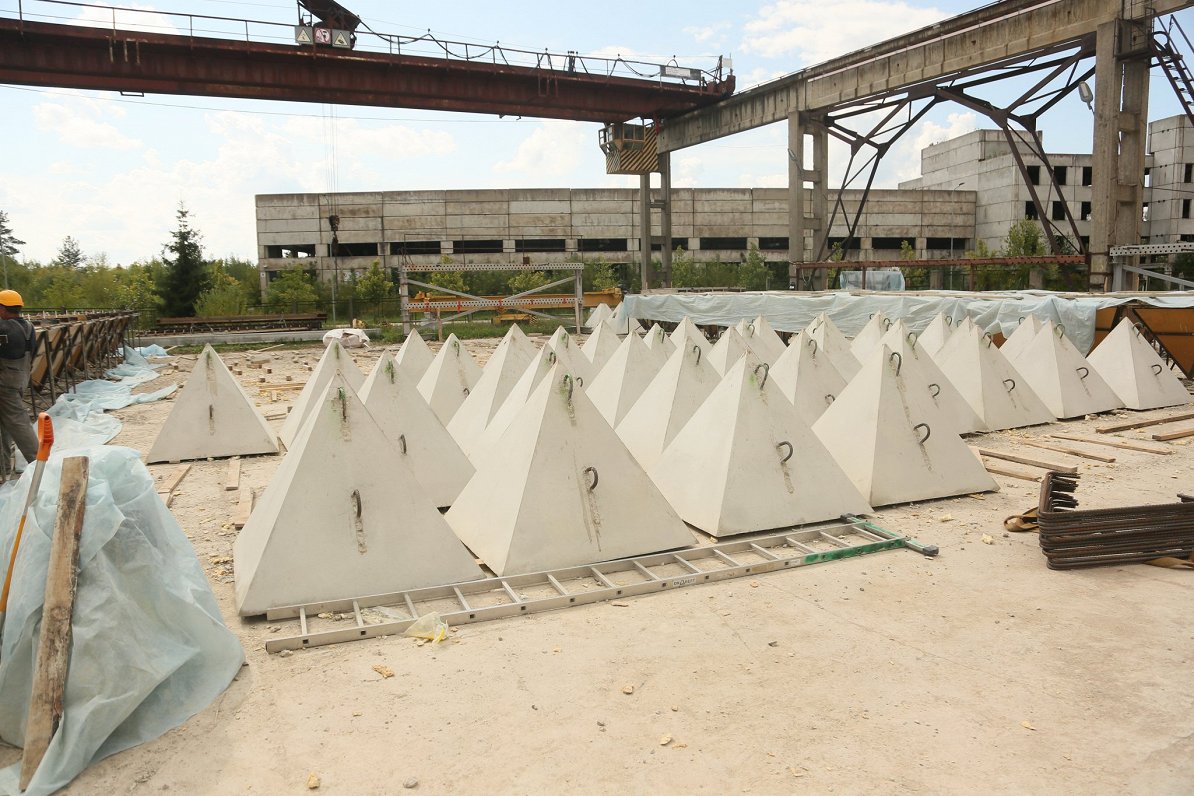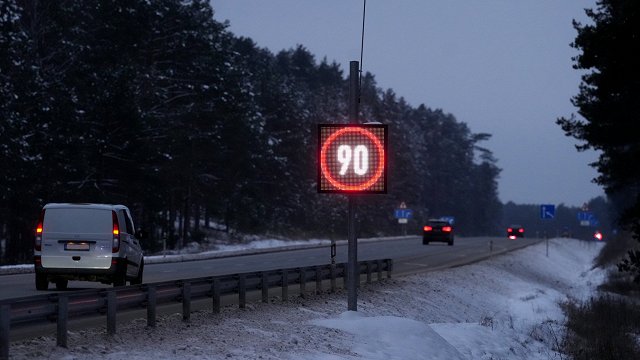"Here, as we can see, there are anti-tank "hedgehogs" in large numbers - several thousand. We also see "lego" blocks, which are very quick to assemble if you need to put up a wall or barrier to protect personnel and equipment from being run over," explained Rieksts.
Nearby, more than 500 "dragon's teeth", pyramidal barriers of reinforced concrete weighing around one tonne, have also been erected at Kārsava railway station, which, if stacked side by side, can block the way for vehicles, including tanks.
"You see, this type of pyramid is very unwieldy to be dragged away in any way. It is also very unwieldy to drive over," the colonel said.
Both the Kārsava railway station and about 20 other locations along the border are temporary barrier storage sites. Some of the anti-mobility barriers will soon be taken to strategic locations near the border to remain in place, some will be stored in equipment parks planned to be built in the coming years according to standard designs.
All the companies involved in the Defense Ministry contract have their hands full at the moment, but there are also concerns about what to do next. Ojārs Jaksts, Chairman of the Board of Daugavpils Dzelzsbetons, which produces "dragons' teeth", would like to continue cooperation with the Ministry:
"Looking ahead, of course, we are ready to look - if the Ministry of Defense or the NBS announces tenders for special structures needed for defense, we are ready to start and also to adjust production in order to successfully implement the project."
The Defense Minister promised that cooperation with business will continue. There will be adaptations and constant monitoring of needs, but there will be work to do.
"We have to be prepared that we will have to strengthen our border in the long term. So this cooperation with local businesses, with local industry, is a long-term measure. It's not just about three or five years, we will work together for the long term. Defense capabilities will have to be strengthened and this work will not stop," said Defense Minister Andris Sprūds.
About half of the anti-mobility barriers have now been received from manufacturers. Contracts with suppliers are valid until September 13. Once the manufacturers have done their work and all the "dragon's teeth", "hedgehogs" and concrete blocks have been delivered to the border in Ludza and Krāslava regions, the soldiers will get to work. As NBS Colonel Rieksts said, during this year's Namejs exercise in September and early October, one of the soldiers' tasks will be to strategically place obstacles in the terrain:
"Most of these obstacles will be in the immediate vicinity of the border. The first places will be the border guard infrastructure, then the main roads, which will also be the most heavily occupied during this exercise."
The military promised that the obstacles would be deployed gradually and would not interfere with people's daily routines.




























